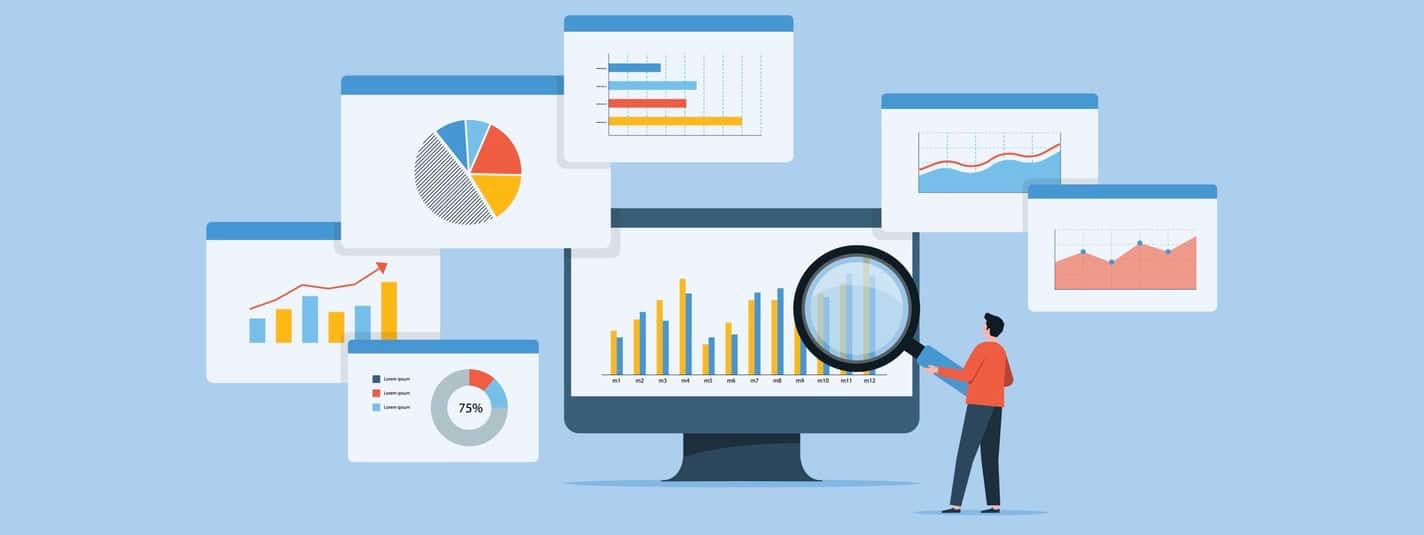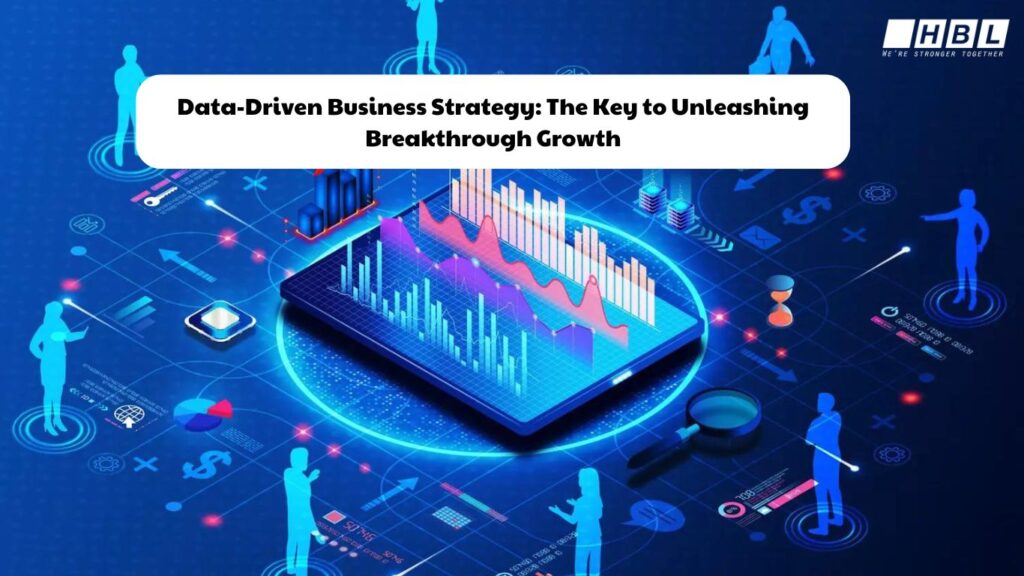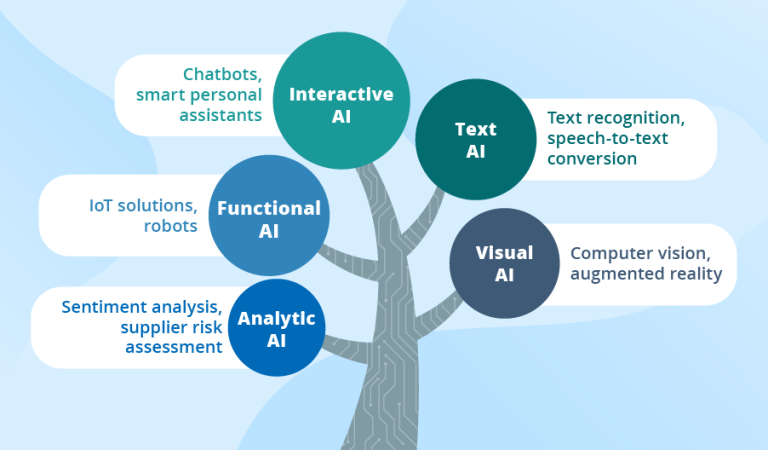Today, data has emerged as an invaluable asset, holding immense potential to revolutionize business strategies and drive growth. However, despite the abundant data available, many companies still need help to fully harness their power to make informed decisions and gain a competitive edge. Embracing a data-driven approach is the key to unlocking the true potential of data and achieving sustainable business success.
For companies dipping their toes into the world of analytics, the prospect of transforming into a fully data-driven organization might feel overwhelming. This article will equip you with a comprehensive understanding of data-based business strategies. By applying these concepts to your own business, you can achieve impressive results. Let’s get started!
What is a Data-Driven Business Strategy?
In today’s digital landscape, a data-driven strategy goes beyond simply collecting information. It’s about harnessing this data to make informed decisions and propel business growth. This approach transforms decision-making from intuition-based to one guided by data-derived insights.
Advantages of Data-Driven Business Strategy
- More Accurate Measurement of Business Performance
Leveraging data unlocks a treasure trove of benefits for businesses. One key advantage is the ability to set measurable goals. Instead of relying on hunches or past performance, data-driven strategies utilize key performance indicators (KPIs) derived from deep analysis. These KPIs ensure goals are realistic and aligned with the company’s overall vision.
Data empowers a granular understanding of operations, customer behavior, and market trends. This richness of information allows for the creation of SMART goals (Specific, Measurable, Achievable, Relevant, and Time-bound). With real-time data tracking progress, businesses can ditch annual reviews for a more dynamic and actionable approach to goal achievement.
Data also revolutionizes analysis and predictions. Gone are the days of limited, aggregated data—advanced algorithms and machine learning power data-driven analysis, uncovering hidden patterns invisible to the human eye.
Predictive analytics has become a game-changer, enabling businesses to anticipate market shifts, customer needs, and potential risks with greater confidence. This foresight, grounded in historical data and modeling, empowers informed decisions about product launches, market expansion, and other strategic moves. Businesses can proactively shape their destiny rather than simply reacting to market forces.
- Make quicker decisions
Speed is paramount in today’s marketplace, and a data-driven approach significantly reduces the time between insights and action. Traditional decision-making can be bogged down by lengthy deliberations, extensive research, and approval chains. Real-time data from a data-driven strategy fuels faster decision-making. This agility isn’t just about speed for speed’s sake; it’s about responsiveness to customer needs and market fluctuations. Data-driven businesses can adjust strategies on the fly, ensuring their actions are relevant and timely. This responsiveness can be the difference between seizing an opportunity or falling behind competitors.
- More efficient and time-saving
Data is a powerful tool for boosting efficiency and agility. Accurate data allows companies to streamline operations, eliminate wasteful practices, and optimize resource allocation. This level of efficiency is difficult to achieve with traditional methods that rely on assumptions and outdated information. Furthermore, data fosters agility. Businesses can pivot quickly based on insights, avoiding the rigidity of long-term plans that can hinder adaptation to change. Data-driven organizations embrace a more flexible approach, allowing them to shift gears and change direction with minimal disruption.

Data-driven strategies are adept at uncovering hidden opportunities. Sophisticated data tools analyze trends, customer behavior, and market conditions, revealing unmet needs and emerging niches. This process can spark innovative product ideas, identify potential areas for expansion, or uncover underserved customer segments. As a result, companies can invest in new ventures with a higher degree of confidence.
- Enhance employee engagement and satisfaction
Finally, data can improve employee engagement and loyalty. Data empowers employees with clear metrics for success and a transparent way to track progress and contributions. This fosters a sense of ownership and pride in work, ultimately deepening employee loyalty. Employees with access to data that supports their ideas and initiatives are more likely to engage in problem-solving and innovation. Feeling valued and seeing the impact of their work leads to a more committed and engaged workforce.
- Proactive Risk Management
Data-driven strategies empower businesses to become proactive in managing risk. Through in-depth analysis of market trends, customer feedback, and internal operations, companies can uncover potential roadblocks before they materialize. This foresight allows for preventative measures, minimizing disruptions and costly mistakes. As a result, data-driven organizations cultivate greater stability and resilience in the face of unforeseen challenges.
- Unlocking Deeper Customer Insights
Leveraging data empowers businesses to develop a richer understanding of their customers. This goes beyond demographics to encompass needs, preferences, and behavioral patterns. By analyzing this customer data, businesses can uncover valuable trends and insights. These insights act as a roadmap, guiding the development and refinement of products and services for a more tailored customer experience. This targeted approach fosters increased customer satisfaction, loyalty, and retention. Businesses that can anticipate and address customer needs effectively cultivate a loyal customer base.

Challenges Businesses Face When Implementing Data-Driven Strategy
In today’s digital landscape, data is king. Businesses are increasingly recognizing the immense value of data-driven strategies for gaining competitive edges. However, the road to becoming a truly data-driven organization is paved with challenges. Here’s a look at some of the major hurdles businesses face when implementing a data-driven strategy:
1. Data Quality and Accessibility:
The foundation of any data-driven strategy is high-quality, reliable data. Unfortunately, many businesses struggle with siloed data sets, inconsistencies, and inaccuracies. This “dirty data” can lead to misleading insights and ultimately, poor decision-making. Additionally, fragmented data storage across different departments and systems can make it difficult to access and integrate the information needed for comprehensive analysis.
2. Lack of Data Literacy and Skills:
Extracting value from data requires a skilled workforce. Businesses often lack employees with the necessary expertise in data analysis, interpretation, and visualization. This can lead to a disconnect between raw data and actionable insights. Investing in training programs and attracting talent with data science backgrounds becomes crucial to bridge this gap.
3. Organizational Culture and Resistance to Change:
Shifting towards a data-driven culture requires a fundamental change in mindset. Traditional, intuition-based decision-making processes can be deeply ingrained within any organization. Leaders must champion the value of data and foster a culture of experimentation and evidence-based decision-making. This can involve overcoming resistance from employees who may feel threatened by the perceived loss of control or the additional workload associated with data analysis.
4. Data Security and Privacy Concerns:
As businesses collect and store more customer data, concerns regarding data security and privacy become paramount. Implementing robust security measures and adhering to data privacy regulations like GDPR (General Data Protection Regulation) is essential. Businesses must also ensure transparency in data collection practices and build trust with customers regarding how their data is used.

5. Technological Infrastructure Limitations:
Effectively leveraging data requires a robust technological infrastructure. Businesses may lack the necessary hardware, software, and data management tools to handle the volume, variety, and velocity of data generated today. Investing in cloud-based solutions, big data analytics platforms and data visualization tools can empower businesses to harness the true potential of their data.
Steps to Creating a Data-Driven Business Strategy
Creating a data-driven business strategy involves a systematic approach to leverage data-formed decision-making. This is a step-by-step you can refer to:
1. Define Clear Objectives
Defining clear objectives is the cornerstone of any successful data-driven business strategy. It provides the compass for your data journey, ensuring that every data point collected, analyzed, and interpreted contributes directly to your desired outcomes.
2. Identify Key Performance Indicators (KPIs)
Select quantifiable metrics directly linked to your objectives. KPIs, such as Net Promoter Score or customer satisfaction scores, provide benchmarks for measuring progress.
3. Collect Comprehensive Data: Gather accurate and reliable data from diverse sources, including customer interactions, sales transactions, and website analytics. This data forms the foundation for insightful analysis.
4. Organize Data for Efficiency: Structure data for easy access and analysis. Data management tools optimize data organization, ensuring up-to-date and secure information.
5. Uncover Insights through Data Analysis: Employ statistical and analytical techniques to extract valuable patterns, trends, and correlations from your data. Utilize a range of tools, from spreadsheets to advanced analytics platforms.
6. Visualize for Impact: Transform data into compelling visual representations like charts and graphs. Data visualization enhances communication, simplifies understanding, and reveals hidden patterns.
7. Build Predictive Data Models: Create mathematical representations of real-world processes to forecast future trends and outcomes. Sales forecasting models, for example, leverage historical data to predict future sales.
8. Continuously Iterate and Improve: Foster a culture of adaptability by regularly reviewing and refining your strategy based on new insights and feedback. Embrace change to maintain relevance and effectiveness.
9. Break Down Data Silos: Promote data sharing and collaboration across departments. A holistic view of the business drives informed decision-making, identifies collaboration opportunities, and enhances efficiency.
10. Monitor and Measure for Success: Track KPIs and other relevant metrics to evaluate strategy performance. Use these insights to optimize your approach and achieve desired outcomes.
A data-driven strategy is essential for modern business success. By following these steps and leveraging the power of data analytics, organizations can make informed decisions, improve efficiency, and gain a competitive edge.
The Future of Data-Driven Business Strategy
As technology evolves, businesses will harness advanced analytics and artificial intelligence to uncover deeper insights, predict future trends more accurately, and automate decision-making processes.
A key trend will be the democratization of data. With user-friendly tools and platforms, more employees across organizations will have access to data and the ability to analyze it, fostering a data-driven culture. Additionally, real-time data processing and analysis will become the norm, enabling businesses to respond swiftly to market changes and customer demands.
Ethical considerations will also play a pivotal role. Businesses will need to prioritize data privacy, security, and fairness to build trust with customers and stakeholders. As data becomes an increasingly valuable asset, its responsible management will be crucial for long-term success.
Ultimately, the future of data-driven business strategy lies in the ability to combine advanced analytics with human intuition and creativity. Organizations that can effectively leverage data while maintaining a human-centric approach will be best positioned to thrive in the data-driven economy.
Successful Case Studies of Data-Driven Business Strategy
Data-driven business strategies have been successfully implemented in many industries. Here are some success stories you can consider:
1. Oreo’s “Wonder Vault” Campaign:
- Objective: Increase social media engagement and drive customer attention during the Halloween season.
- Strategy: Oreo created an interactive website that allowed users to “unlock” virtual vaults by entering codes from Oreo cookie packages. Each vault contained exclusive content such as wallpapers, games, and discount codes.
- Results: The campaign generated significant buzz on social media, with millions of website visits and thousands of shares. Oreo successfully attracted customer attention and boosted sales during Halloween.
- Analysis: The campaign’s success was due to its creative blend of digital experience and the physical product. Oreo used consumer data to understand their preferences and create a campaign that resonated with them.

2. Coca-Cola’s “Share a Coke” Campaign:
- Objective: Strengthen customer connections and drive brand sharing.
- Strategy: Coca-Cola printed personalized names and nicknames onto Coca-Cola cans and bottles, encouraging customers to share fun moments with friends and family by taking photos and posting them on social media with the hashtag #ShareACoke.
- Results: The campaign generated a massive social sharing movement, with millions of posts created and a surge in brand engagement. Coca-Cola successfully built stronger relationships with customers and reinforced its brand image.
- Analysis: The campaign’s success was due to its simplicity and personalization. Coca-Cola used consumer data to understand the importance of social connection and created a campaign that encouraged sharing and interaction.
3. Dos Equis’ “The Most Interesting Man in the World” Campaign:
- Objective: Increase brand awareness and attract male consumers.
- Strategy: Dos Equis created a series of TV commercials featuring “The Most Interesting Man in the World,” a masculine, confident, and adventurous character. The campaign encouraged customers to visit the website to learn more about “The Most Interesting Man in the World” and share their own interesting stories.
- Results: The campaign successfully captured the attention of male consumers and increased brand awareness for Dos Equis. The campaign also led to a significant sales increase.
4. ABBA’s “Dancing Queen” Campaign:
- Objective: Increase brand awareness and attract younger generations.
- Strategy: ABBA partnered with TikTok to create the #DancingQueen challenge, encouraging users to post videos of themselves dancing to the song “Dancing Queen.” The campaign also included ABBA-themed AR filters and effects on TikTok and Instagram.
- Results: The campaign generated a social media frenzy, with millions of videos created and billions of views. ABBA successfully attracted younger generations and increased brand awareness.
- Analysis: The campaign’s success was due to its combination of classic music, social media trends, and AR technology. ABBA used user data to understand the preferences of younger generations and create a campaign that resonated with them.
5. Starbucks’ “My Starbucks Idea” Campaign:
- Objective: Gather customer feedback and improve customer experience.
- Strategy: Starbucks created an online platform that allowed customers to share their ideas about products, services, and store experiences. The company used the collected data to make changes to its menu, store design, and customer service procedures.
- Results: The campaign helped Starbucks gather valuable customer feedback and improve the overall customer experience. This led to increased customer loyalty and higher sales.
- Analysis: The campaign’s success was due to its focus on gathering and acting on customer feedback. Starbucks used data to understand customer needs and wants and then made changes to meet those needs.
6. Netflix’s “Netflix Originals” Campaign:
- Objective: Create high-quality original content that attracts customers and increases market share.
- Strategy: Netflix used viewer data to identify popular genres and topics. They then partnered with content creators to develop original TV shows and movies that aligned with viewers’ interests.
- Results: Netflix has successfully created a library of high-quality original content that has attracted customers and made them the leading streaming service provider.
- Analysis: The campaign’s success was due to its combination of viewer data, high-quality content, and effective marketing strategies. Netflix used data to understand viewer needs and then provided them with the content they wanted.

Conclusion
In today’s digital age, data plays a pivotal role in shaping effective business strategies. Businesses that can harness and apply data intelligently will reap numerous competitive advantages, from gaining deep customer insights to optimizing operational efficiency and making informed decisions aligned with market trends.
Implementing a data-driven business strategy requires a long-term commitment from business leaders, investment in technology infrastructure, and highly skilled human resources. However, the benefits of effective data application far outweigh the investment costs, providing a significant competitive edge and driving sustainable business growth in the future.
Embark on your digital transformation journey today by building a sound data strategy and leveraging advanced data analytics technologies. Let data be your guiding compass to steer your business toward success!
See more:
– How to Build an Agile Development Team Structure
– Top 15 Most Reputable IT Outsourcing Companies in Singapore
– Cloud Solutions for Businesses: 2025 Proven Implementation Guide




